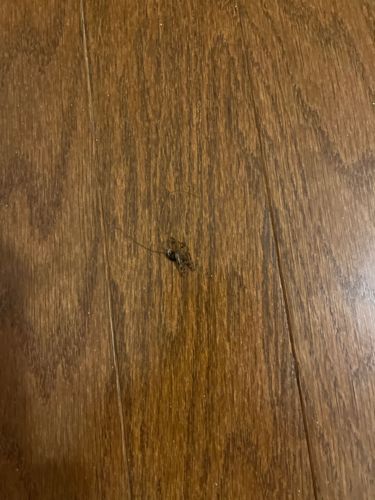Cockroach (likely German or American Cockroach based on common indoor sightings)
Scientific Name: Blattella germanica (German Cockroach) or Periplaneta americana (American Cockroach)
Order & Family: Order: Blattodea, Family: Blattidae (for American Cockroach) or Ectobiidae (for German Cockroach)
Size: German Cockroach: 1/2 to 5/8 inch (1.3-1.6 cm); American Cockroach: 1.5 to 2 inches (3.5-5 cm)

Natural Habitat
Indoors, cockroaches prefer warm, humid, and dark environments such as kitchens, bathrooms, basements, and utility areas. They hide in cracks, under appliances, inside walls, and in other sheltered locations close to food and water sources. Outdoors, some species live in leaf litter, under rocks, or in sewers.
Diet & Feeding
Cockroaches are omnivores and scavengers, eating almost anything organic, including food scraps, decaying matter, sweets, starches, greasy foods, meat, and even non-food items like glue, hair, and book bindings.
Behavior Patterns
Cockroaches are primarily nocturnal and gregarious insects, often found in groups. They are known for their rapid running and ability to fit into small cracks and crevices. They undergo incomplete metamorphosis, meaning they hatch from eggs as nymphs that resemble smaller versions of adults.
Risks & Benefits
Risks: Cockroaches can carry and spread various bacteria, viruses, fungi, and parasites, contaminating food surfaces and causing food poisoning, dysentery, allergies, and asthma flare-ups due to their shed skins and droppings. They are primarily considered pests. Benefits: In natural ecosystems, some species act as decomposers, breaking down organic matter.
Identified on: 8/31/2025